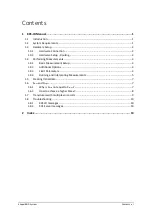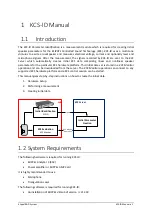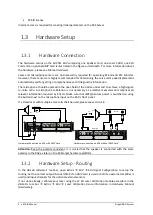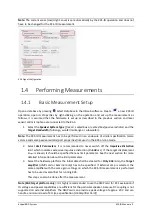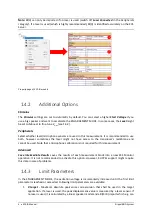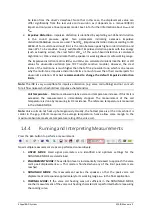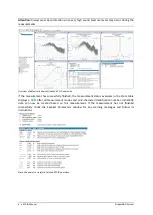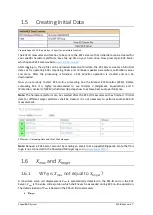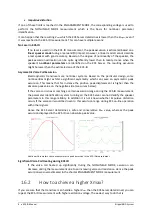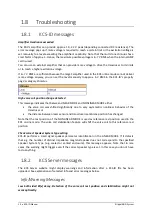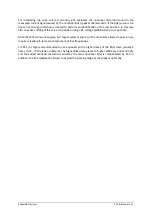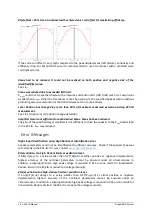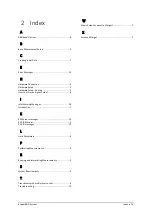
Klippel R&D System
KCS-ID Manual
5
be taken from the driver’s datasheet. Note that in this case, the displacement value can
differ significantly from the real voice coil excursion as it depends on a manual Bl(X=0)
import and only uses a linear speaker model. See 1.6 for further information about
X
target
and
X
max
2.
Impulsive Distortion
-
Impulsive distortion is identified by exploiting out-of-band distortion
in the sound pressure signal. Two parameters indicating excessive impulsive
distortion/Rub&Buzz issues are used: The
IDR
MT
(
Impulsive Distortion Ratio
according to IEC
60268-21 for multi-tone stimuli) limit is the ratio between peak higher order distortion and
mean SPL. To be sensitive to very audible short impulsive distortion peaks with low energy
(such as beating wires), the crest factor
CID
MT
of the out-of-band distortion is calculated.
High
IDR
MT
or
CID
MT
values indicate that the speaker is working above its safe working range.
The impulsive distortion metrics
IDR
MT
and
CID
MT
are calculated similarly like the
IDR
or
CID
values for sinusoidal excitation (see
TRF Transfer Function
module). However, the crest
factor of the multi-tone is much higher than that of the sinusoidal tone, which is one reason
why the multi-tone impulsive distortion limits are much lower than their counterparts for
sinusoidal excitation.
It is not recommended to change the default impulsive distortion
limits.
Note:
The IDR is very susceptible for impulsive distortion (e.g. voice coil rubbing) and not so much
for air flow noises which exhibit less impulsive characteristics.
Coil Temperature
– Maximum allowed relative voice coil temperature increase. If this limit is
exceeded, the measurement is immediately stopped. The measurement of the coil
temperature is done by measuring its DC resistance The reference temperature is measured
in the LINEAR MODE.
Note:
Voice coils do not heat up homogenously. Usually, the hottest place is at the rims, while it is
colder in the gap. KCS-ID measures the average temperature, hence allow some margin to the
maximum absolute maximum temperature rating of the voice coil.
1.4.4
Running and Interpreting Measurements
Press the
Run
button to perform a measurement.
Now multiple measurement steps are performed consecutively:
1.
LINEAR MODE:
Small signal parameters are identified and optimum settings for the
NONLINEAR MODE are determined.
2.
ENLARGEMENT MODE:
The excitation level is incrementally increased to approach the voice
coil’s peak displacement x
max
. This mode is finished when any of the limit parameters are
reached.
3.
NONLINEAR MODE:
This measurement excites the speaker so that the peak voice coil
displacement corresponds approximately to its working range x
max
in the final application.
4.
THERMAL MODE:
If the voice coil heating was not sufficient in the NONLINEAR MODE,
another measurement of the voice coil heating characteristic is performed before measuring
the cooling curve.



